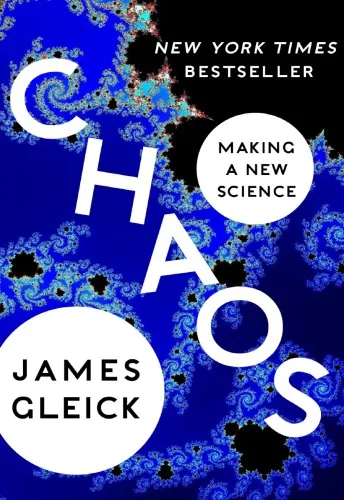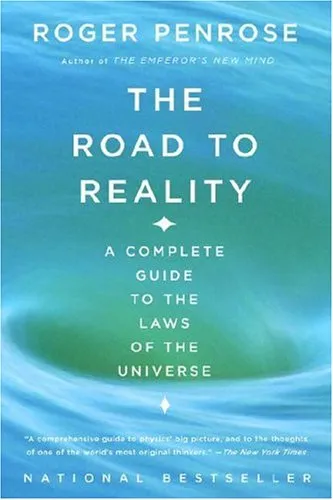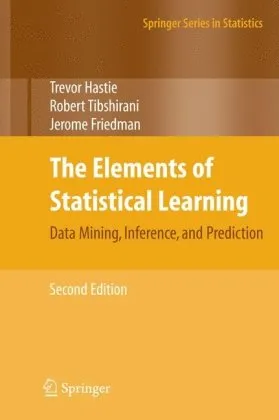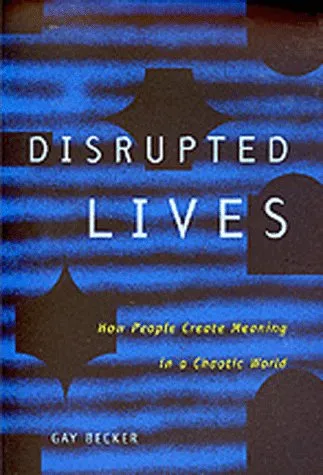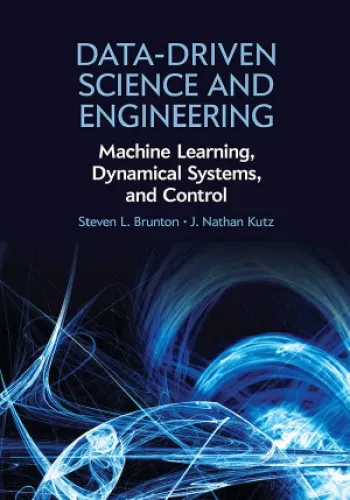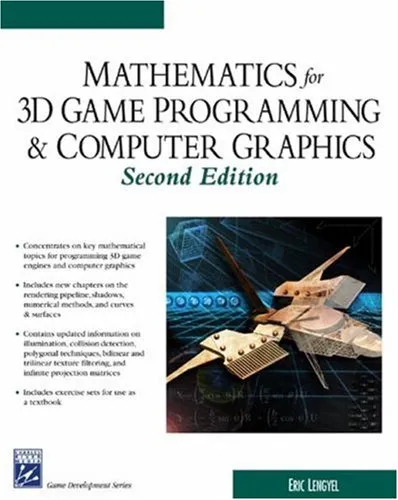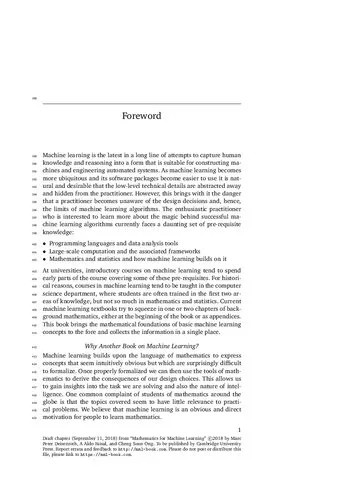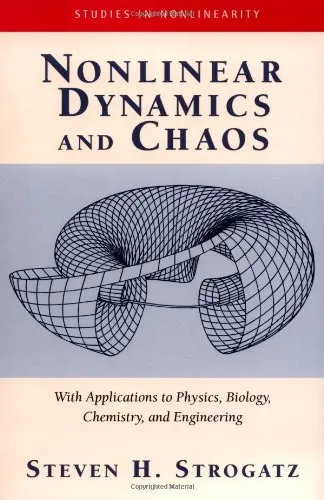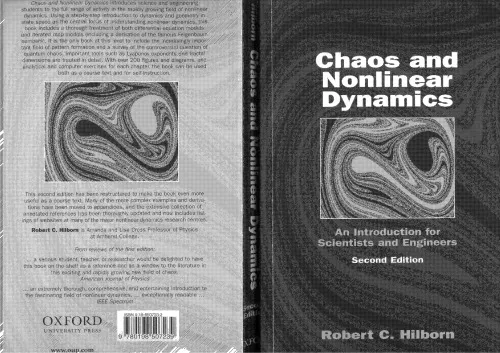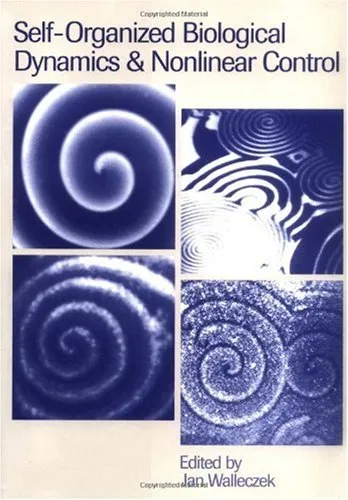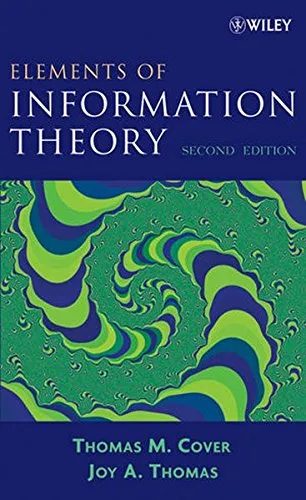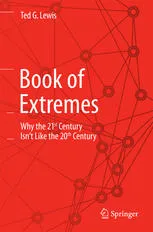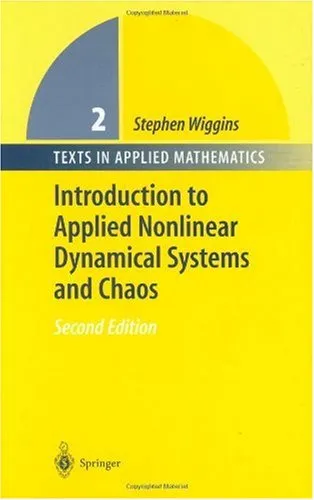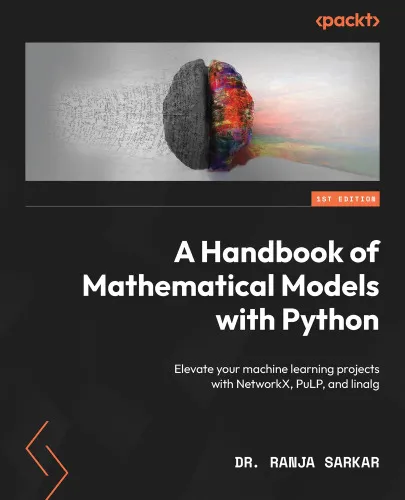Chaos: making a new science
4.5
بر اساس نظر کاربران

شما میتونید سوالاتتون در باره کتاب رو از هوش مصنوعیش بعد از ورود بپرسید
هر دانلود یا پرسش از هوش مصنوعی 2 امتیاز لازم دارد، برای بدست آوردن امتیاز رایگان، به صفحه ی راهنمای امتیازات سر بزنید و یک سری کار ارزشمند انجام بدینکتاب های مرتبط:
معرفی کتاب 'Chaos: Making a New Science'
در کتاب 'Chaos: Making a New Science' به دنیای جذاب و پیچیدهٔ علم Chaos وارد میشویم، جایی که بسیاری از مفاهیم سنتی علمی به چالش کشیده میشوند و نظم جدیدی کشف میشود. این کتاب به بررسی نظریه Chaos و تأثیرات آن بر علوم مختلف میپردازد و داستانهای علمی و تاریخی جذابی را روایت میکند.
خلاصه جامع کتاب
کتاب 'Chaos: Making a New Science' به عنوان یکی از برترین آثار در معرفی علم Chaos، به بررسی این پدیدهٔ علمی منحصر به فرد میپردازد که بر الگوهای نامنظم در طبیعت تمرکز دارد. این کتاب توضیح میدهد که چگونه Chaos در سیستمهای دینامیکی مختلف از جمله آب و هوا، مالی، و زیستشناسی ظاهر میشود و چگونه مفاهیم جدیدی مانند Fractals و اثر Butterfly به درک عمیقتری از این پدیدهها کمک میکنند.
کتاب به بررسی کارهای پیشگامان این علم مانند ادوارد لورنز و بنوا مندلبرت میپردازد و نشان میدهد که چگونه تحقیقات آنها منجر به کشفهای مهمی در زمینههای مختلف شده است. نویسنده، جیمز گلیک، همچنین به تحلیل تأثیرات گسترده علم Chaos بر حوزههایی چون فیزیک، ریاضیات و حتی علوم اجتماعی میپردازد.
نکات کلیدی
- Chaos یک علم جدید و چند رشتهای است که به بررسی الگوهای غیرخطی میپردازد.
- Fractals الگوهای تودرتویی هستند که در بسیاری از پدیدههای طبیعی دیده میشوند.
- اثر Butterfly نشاندهندهٔ حساسیت سیستمها به شرایط اولیه است.
- Chaos در بسیاری از حوزههای علمی و حتی زندگی روزمره تأثیر دارد.
- آشنایی با Chaos میتواند منجر به پیشرفتهای قابل توجهی در حل مشکلات پیچیده شود.
جملات معروف از کتاب
"درحالی که Chaos به نظر میرسد که نشاندهنده تصادف و بینظمی است، در واقع نظم جدیدی کشف میکند که بیانگر الگوهای طبیعت است."
"فقط چند خط کد و معادلات ساده ممکن است به نتایج پیچیده و شگفتانگیزی منجر شوند."
چرا این کتاب مهم است
کتاب 'Chaos: Making a New Science' به دلیل بررسی دیدگاههای نوین و پیشگامانهاش از اهمیت ویژهای برخوردار است. این کتاب با معرفی مفاهیم علمی جدید و جذاب، به تغییر نگرش ما نسبت به جهان و الگوهای ظاهراً تصادفی پیرامون ما کمک میکند. این اثر نه تنها برای دانشمندان و ریاضیدانان، بلکه برای هر کسی که به مطالعه علم و طبیعت علاقه دارد، منبعی ارزشمند تلقی میشود.
این کتاب به مخاطبانش نشان میدهد که چگونه Chaos میتواند به عنوان یک ابزار توانمند برای درک پدیدههای پیچیده طبیعی و حتی انسانی مورد استفاده قرار گیرد. بازتعریف مفهوم Chaos در این اثر، مسیری جدید برای کشفهای پیشرفته و بینشهای علمی ایجاد میکند که قدرت تأثیرگذاری بر دنیای علم و فراتر از آن را دارد.
Introduction to Chaos: Making a New Science
James Gleick's "Chaos: Making a New Science" is a groundbreaking exploration into the fascinating world of chaos theory, an area of physics and mathematics that challenges traditional understandings of order and predictability. By delving into the lives and works of some of the most innovative thinkers of the 20th century, Gleick unfolds a narrative that not only tracks the evolution of a new field of science but also reshapes our perception of the universe.
Detailed Summary of the Book
In "Chaos: Making a New Science," Gleick embarks on an intriguing journey through the origins and development of chaos theory. He begins by demystifying the concept that seemingly random systems are actually governed by underlying patterns of order. From the turbulent motions of weather patterns to the intricate dance of biological systems, chaos theory provides insights into complex systems that defy linear predictability.
The book introduces readers to pioneers such as Edward Lorenz, whose work on weather models led to the understanding that small changes in initial conditions can result in vastly different outcomes—popularly illustrated by the notion of the 'butterfly effect.' Gleick further explores contributions from other seminal figures like Benoit Mandelbrot, who discovered fractals, and Mitchell Feigenbaum, whose constant is a critical element in understanding chaotic systems.
Gleick weaves these narratives together with clarity and precision, illustrating how these diverse discoveries are interconnected. As he narrates the tale of how chaos theory became a major player in scientific circles, readers are drawn into the revolutionary thinking that redefines the laws of nature as we know them.
Key Takeaways
The book presents several key takeaways that capture the essence of chaos theory:
- The Unpredictability of Complex Systems: Discover how small differences in a system's initial conditions can lead to vastly different outcomes, making prediction challenging.
- Fractals in Nature: Learn about fractals, intricate patterns that self-repeat at every scale, found throughout the natural world—from leaves to mountain ranges.
- Interdisciplinary Impact: Understand how chaos theory extends beyond physics into other fields like biology, chemistry, and even economics, where it offers fresh insights into complex phenomena.
- The Beauty of Randomness: Appreciate the inherent beauty and order hidden within seemingly random systems.
Famous Quotes from the Book
Here are some thought-provoking quotes from "Chaos: Making a New Science" that capture its essence:
"Where chaos begins, classical science stops."
"It turned out that the science of dynamical systems—the vague, nonlinear, non-periodic systems, such as weather, turbulence, chemical reactions, that had always haunted physicists—was not, after all, a toylike collection of illustrations of some nice parlor tricks but a collective study of life's mystery."
Why This Book Matters
"Chaos: Making a New Science" is a pivotal work because it democratizes a complex topic, making chaos theory accessible to both scientists and lay readers. Before Gleick’s work, chaos theory was perceived as a niche area of research with limited applicability. However, this book revolutionized that perception by showcasing its wide-ranging implications and the interconnectedness of scientific disciplines.
Moreover, Gleick’s narrative style brings a human element to the science, highlighting not just the discoveries, but the human endeavours and the intellectual struggles behind them. By doing so, "Chaos" not only educates but inspires curiosity and wonder about the natural world.
Ultimately, "Chaos: Making a New Science" serves as a bridge between abstract scientific concepts and practical understanding, encouraging a new wave of interdisciplinary research and discovery.
دانلود رایگان مستقیم
شما میتونید سوالاتتون در باره کتاب رو از هوش مصنوعیش بعد از ورود بپرسید
دسترسی به کتابها از طریق پلتفرمهای قانونی و کتابخانههای عمومی نه تنها از حقوق نویسندگان و ناشران حمایت میکند، بلکه به پایداری فرهنگ کتابخوانی نیز کمک میرساند. پیش از دانلود، لحظهای به بررسی این گزینهها فکر کنید.
این کتاب رو در پلتفرم های دیگه ببینید
WorldCat به شما کمک میکنه تا کتاب ها رو در کتابخانه های سراسر دنیا پیدا کنید
امتیازها، نظرات تخصصی و صحبت ها درباره کتاب را در Goodreads ببینید
کتابهای کمیاب یا دست دوم را در AbeBooks پیدا کنید و بخرید
